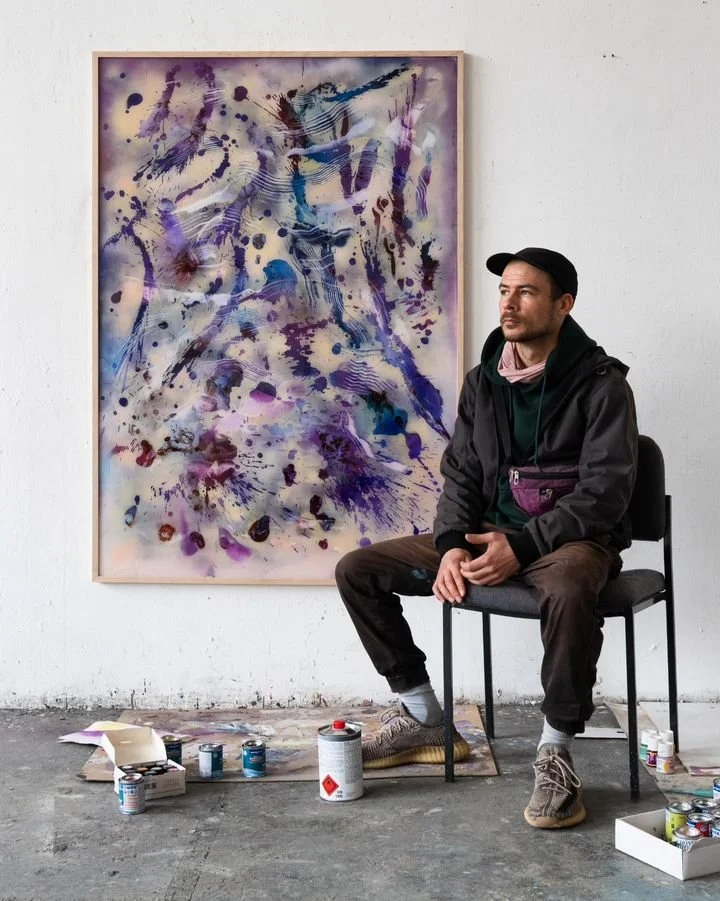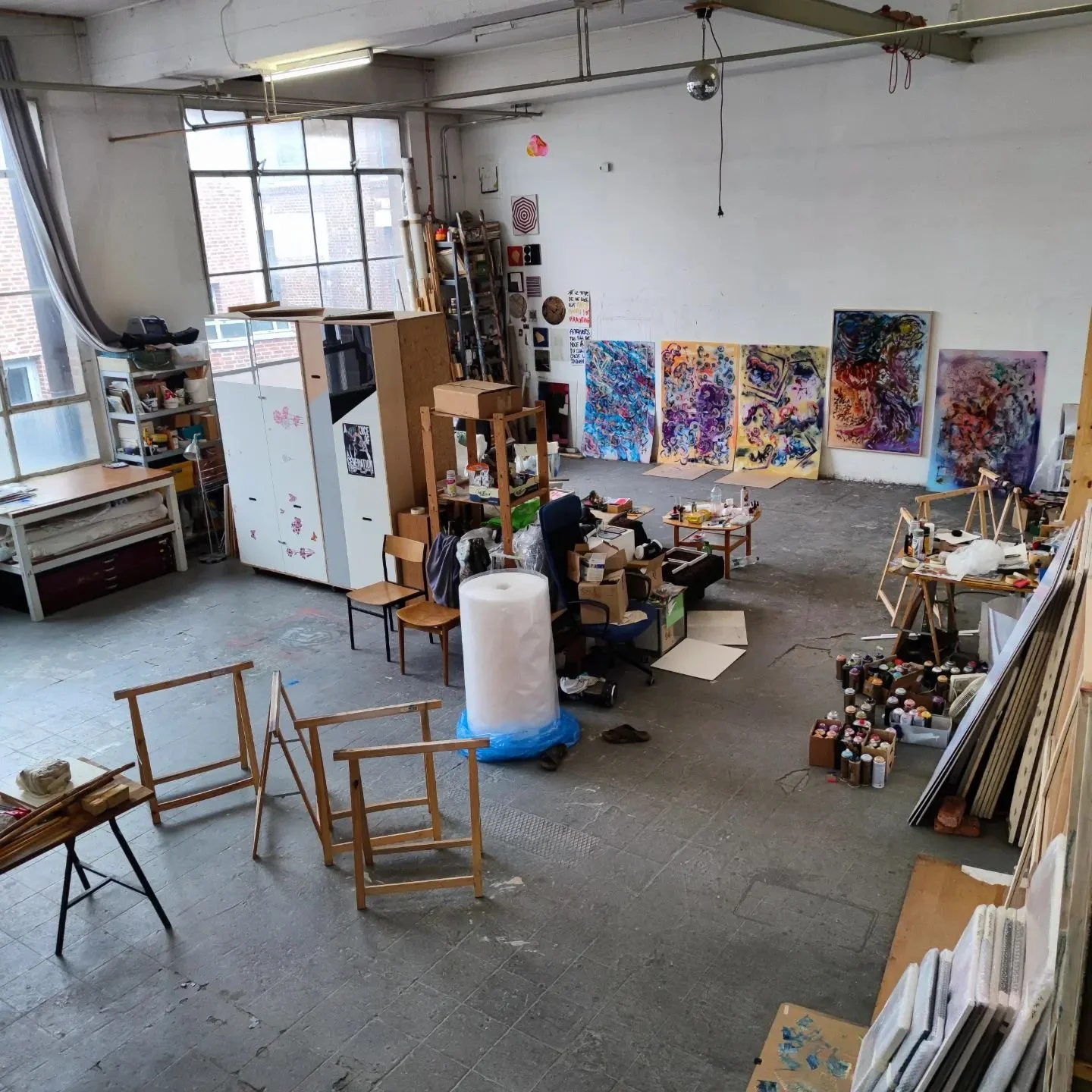HANS VINZENZ SEIDL:
In his works, German contemporary artist Hans Vinzenz Seidl walks a path of playful coincidence and artistic seemingly baroque hidden objects. Working primarily with glass and magnetic oil, Seidl creates mixtures of abstract and figurative forms that require forethought, reflection and acceptance of the outcome.
The nature of Seidl’s technique requires him to “start from the end”, beginning with the highlights as the glass is maintained in reverse. Glazing layers of colour, grids, patterns, and structures, unbalanced arrangements of pictorial and design elements of the pictorial and design elements, different colours within one colours within a picture, but also shimmering pop art effects, streaks, disturbances and numerous reflections encourage the viewer to constantly change location. Hans Vinzenz Seidl trusts completely in the richness and sensuality of his painterly means.
A limited series of Seidl´s work will be on display at our Pop-Up Gallery exhibition from December 2nd to December 31st in Barcelona, to learn more about the event please click here.
What Themes and ideas inspire you in your art?
SEIDL: There are many very different things that inspire me. Sometimes very consciously, but also unconsciously, so that I often only realise afterwards what led me to one formal decision or another. On the one hand, there are the various artistic positions of colleagues, museums and galleries that I look at during regular visits to exhibitions. On the other hand, there are also everyday experiences, memories of the past, states of trance, natural phenomena, melancholy and daydreams. It’s difficult to say what is actually the greatest artistic inspiration for me, as we are constantly flooded with images. I think it is a mixture of which I use my personal selecetive perception to manifest my view of the zeitgeist in the form of painting.
What process of creating a work of art is most unique or important to you ?
SEIDL: I deliberately limit myself in my choice of materials so that I only have a few attempts and a short time frame to react during the drying process. On the other hand, of course, there is no need to overpaint, which often seems like an effort, or to constantly think about when a work is finished, as you could always make further adjustments. This gives the works a certain directness, at least that’s my intention when painting, or represents a kind of “forced painterly one take” that aims for a relaxed and completely natural effect, which I hop is recognisable.
what materials techniques or medium do you prefer to use in your art?
SEIDL: I first discovered the painting medium Ferrofluid about 12 years ago. It is a magnetic oil that I apply to the glass and set in motion with a strong magnet. I move the magnet under the glass, causing the liquid to form unique braided and grid-like structures of fine lines. I gradually began to combine the Ferrofluid with other painting media such as ink, varnish and resin.
Glass as a painting surface offers me some advantages but also disadvantages.
Painting behind glass is not as forgiving as canvas or paper, for example, as you only have a few attempts. It is not possible to paint over individual areas as the painting is layered behind the glass, which means that the individual work steps always have to be on point. In addition, you must always bear in mind that it must be thought of and painted in mirror image and that the highlights are placed at the beginning and not at the end.
Depending on the time of the day or the type of artificial lighting, the reflection on the glass makes the surrounding space and, depending on the angle of view, the viewer himself appear in the work. This is what make the painting surface fascinating for me. Thus the works, especially when additional layers of colour are applied to the outside of the glass, always appear different and naturally take up the space in which they are located, as well as the incidence of light, inviting the viewer to constantly change their point of view. In this way, a static object on the wall can help you move around the room yourself, allowing various pictorial elements to appear and disappear before you eyes.
SEIDL: At the beginning of my art studies, I mainly painted and drew naturalistically. Back then, I worked classically in figurative and representational style on paper and canvas. At some point, however, I increasingly detached myself from figuration and what remained was my wide-ranging colour palette and abstracted remnants of my figurative and representational pictorial elements, which still appear in my works today in a greatly reduced form.
How do you see your style and creative approach evolving over time?
How do you evaluate the success or effect of your artwork on the audience?
What role do you see art playing in today’s society?
SEIDL: In today’s world, art plays a multifaceted role, not only providing aesthetic pleasure, but also serving as a form of expression, reflecting social issues, creating emotional resonance and promoting new perspectives. Art contributes to cultural diversity, inspires dialogue and can help stimulate social change or shed light on complex issues.
SEIDL: The special feature of reflective reverse glass painting for the public is that the image is painted on the back of the glass, as well as the glass. This creates a unique visual experience in which light and reflections influence the artwork in an unusual way, creating a fascinating depth effect. Viewers therefore often experience the artwork with an added aesthetic appeal and a deeper visual dimension.
What challenges have you encountered in your creative process and how have you dealt with them ?
SEIDL: Painting, or art in general, is associated with constant failure. How you deal with this varies from person to person. For my part, at some point I accepted that failure is part of it and that it is important to learn from your mistakes and avoid them in your next works.
Are there any special projects or works that you would like to highlight or share with the audience?
SEIDL: “No Darlings Left” is one of my key painting. Here, for the first time in a larger format, I have added additional painterly elements to the outside of the glass, which opens up a further level of experience.
what future projects or ideas do you plan to realise in your art?
SEIDL: Currently I am working in the studio on many new reverse glass paintings in a slightly different, more geometric style. I would like to combine the style of my amorphous forms with geometric and typographic elements. I have also been planning for some time to develop a small-format prototype in which my reverse glass paintings are illuminated from behind by LEDs. Beside that, there are a few group exhibitions planned for next year where I will be exhibiting, which I am very much looking forward to.








